Best MTB smart trainer 2026 – top options that will give you fitness gains all year round
Buying a MTB smart trainer will help you stay race-fit even when the weather's bad
It's hard to drum up the motivation to go out and ride in the cold, wet winter months, especially if it's for training rather than enjoyment purposes. Investing in the best MTB smart trainer could be the answer to your winter blues, helping you to get fitter over winter and hit the summer trails faster than ever.
Using a smart trainer isn't going to appeal to everyone, but thankfully there's an ever-growing range of indoor trainers and training apps to take advantage of. Virtual riding has something for everyone from social group rides, to rigid training plans, and e-racing if you want to satisfy your competitive side.
To help you choose what's right for you, our expert reviewers have compiled this pick of the best MTB smart trainers. Our top pick overall is the Tacx Neo 2T and our best value buy is the Tacx Flux 2. Read on to find a trainer that suits your budget, bike, and needs the best. Skip to the bottom of the article for our advice if you need some help choosing a smart trainer.
Best MTB smart trainers
Why trust BikePerfect
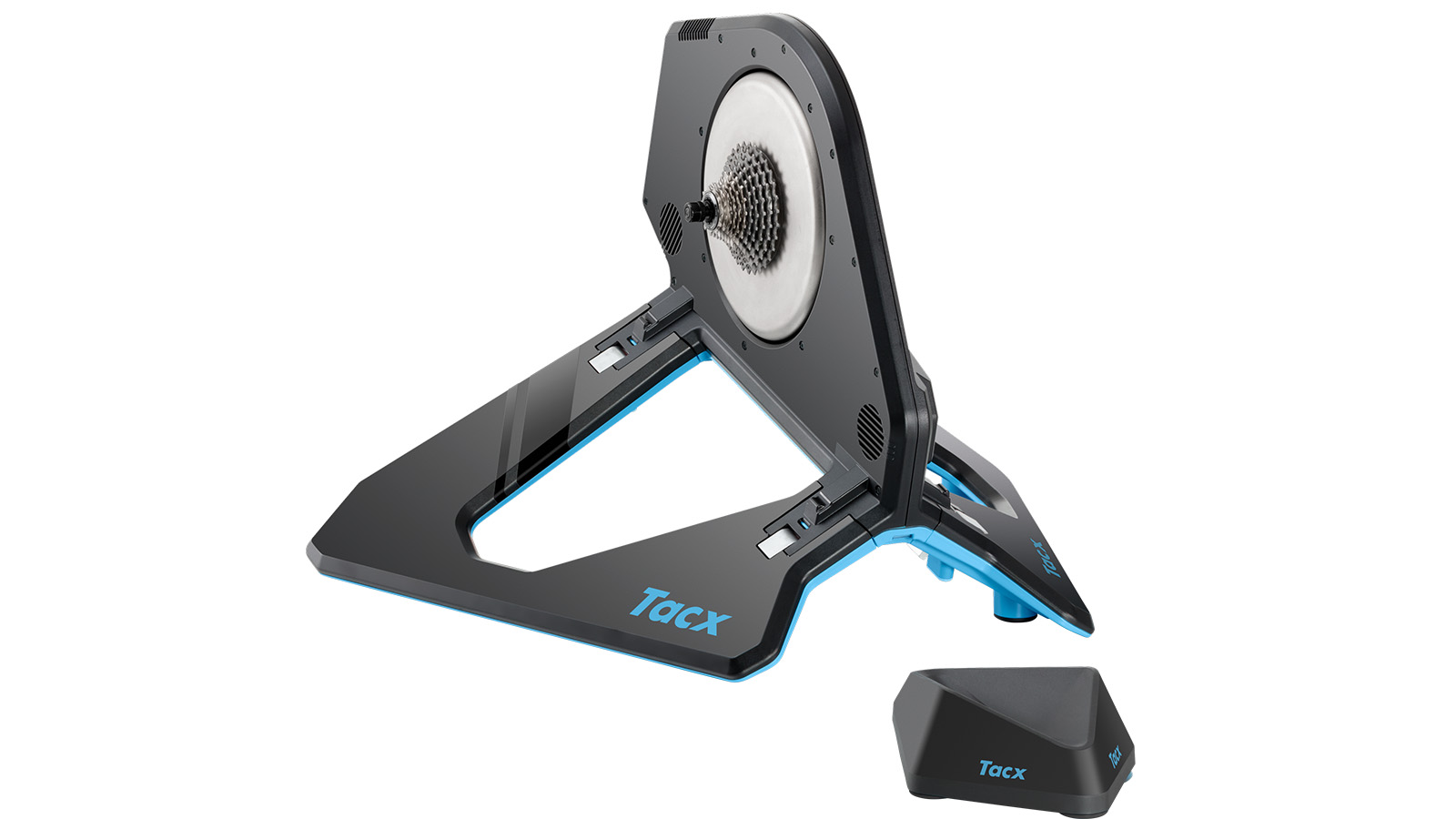
Tacx Neo 2T
Specifications
Reasons to buy
Reasons to avoid
Looking a bit more like a spaceship than a trainer, the Tacx Neo 2T uses a unique electromagnetic drive unit that allows it to simulate up to a 125kg flywheel for a leg-breaking 2,200W of max resistance and a max incline of 25 percent. The metal flywheel is complete with magnetic-powered electronic coils, meaning the more you pedal, the higher the magnet resistance.
The Neo 2T comes with a power cord and gains a bit of inertia for a more realistic-feeling spin down. To make the whole riding experience even more realistic, the trainer can simulate riding over different surfaces like gravel, cobblestones, and wood planks. Tacx has also built in a minor amount of ‘rock’ to minimize the sensation of your bike being bolted to the floor.
It comes in the box with axle adaptors for 142x12 and 148x12 Boost hub spacing, though you'll need to buy an XD driver or an HG-compatible cassette. Tacx says the power measurement is within 1 percent without the need for calibration, and the trainer can also provide advanced power metrics such as left/right power balance. Plus it folds up so if your pain cave doubles as a spare bedroom, the Neo 2T can easily be tucked away in the closet.
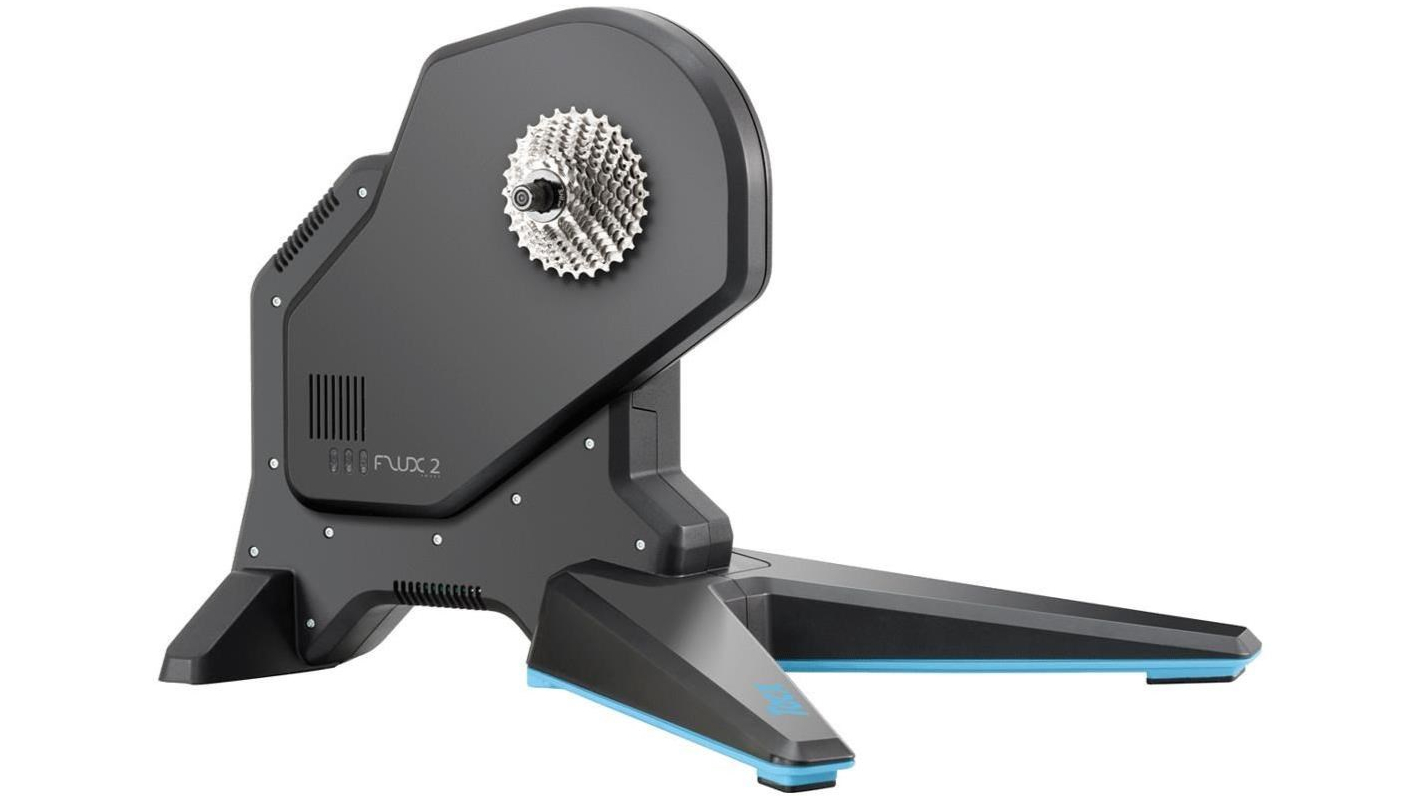
Tacx Flux 2
Specifications
Reasons to buy
Reasons to avoid
If the Tacx Neo 2T is out of your price range, then the Flux 2 is a smart trainer with a lot of the same features at a cheaper price.
The Flux 2 can support a max wattage of 2,000 watts, compared to the 2,200W of the Neo 2T, so there's not much difference there. However, the Flux 2 measures power to an accuracy of 2.5 percent and can only replicate a 16 percent max gradient although that should be plenty for most riders. Other than that, the Flux 2 has most of the features you would want on a smart trainer.
This trainer isn't foldable, making it harder to store when summer comes back around, though it does have a smaller base footprint when set up. It's compatible with standard axle sizes, and you get one month of Tacx Premium software for free with your purchase.
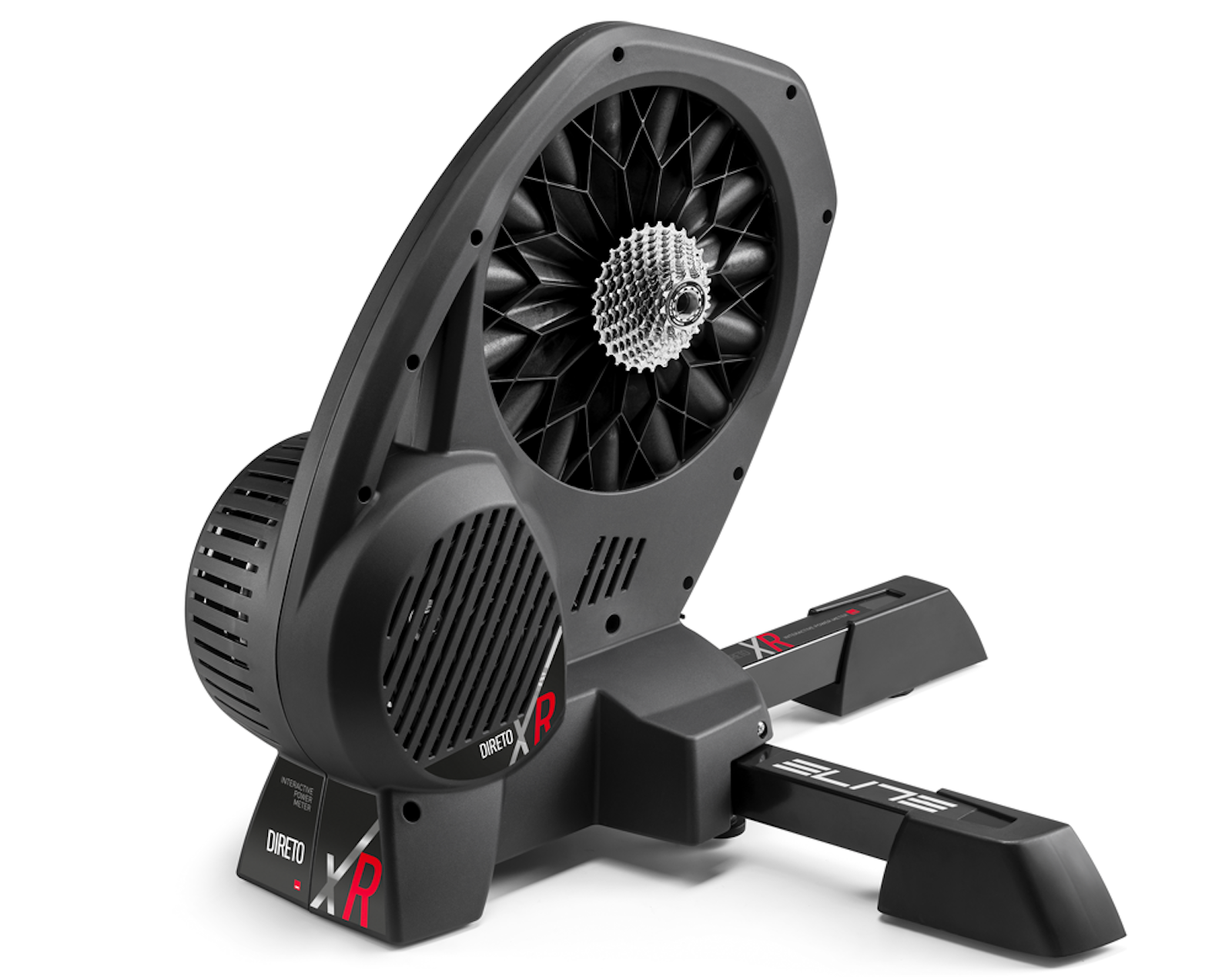
Elite Direto XR
Specifications
Reasons to buy
Reasons to avoid
Elite’s Direto XR smart trainer can sustain a max power output of 2,300W and simulate a gradient of up to 24 percent. The 11lbs (45.1kg) internal flywheel is heavier than the previous model, and the Optical Torque System (OTS) does well with what it has to provide quick and smooth modulations in power, without making too much noise.
The OTS also shows you metrics on how round your pedal stroke is and measures power to +/- 1.5 percent accuracy. It has a wide footprint with legs that fold away and a handle to help you move it in and out of storage. Out of the box, it comes with adaptors for a quick release as well as a 142x12 thru-axle. It’s also one of the better-looking units with the shell being latticed on the drive side; unfortunately, all these edges mean it will likely get a bit dusty.
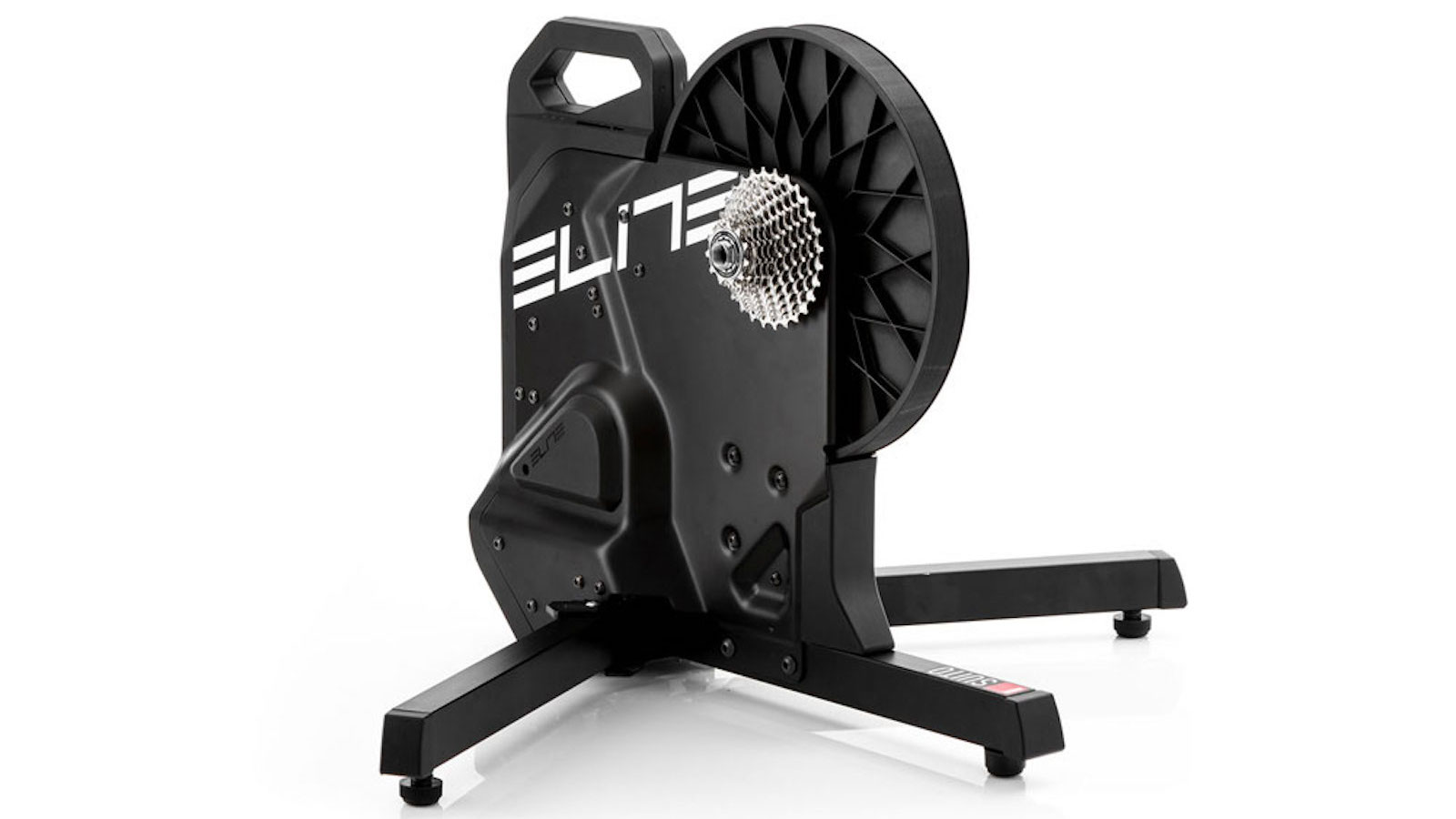
Elite Suito
Specifications
Reasons to buy
Reasons to avoid
If you're looking for something a bit more budget-minded than the Direto, then Elite's Suito may suit you.
With the smaller price tag comes smaller features, so power output is maxed out at 1,900W, but that's still a lot of watts! The accuracy is +/- 2.5 percent, and the max incline is only 15 percent.
The trainer is compatible with all the standard connections and apps, plus when you buy one you get a free one-month subscription to Zwift.
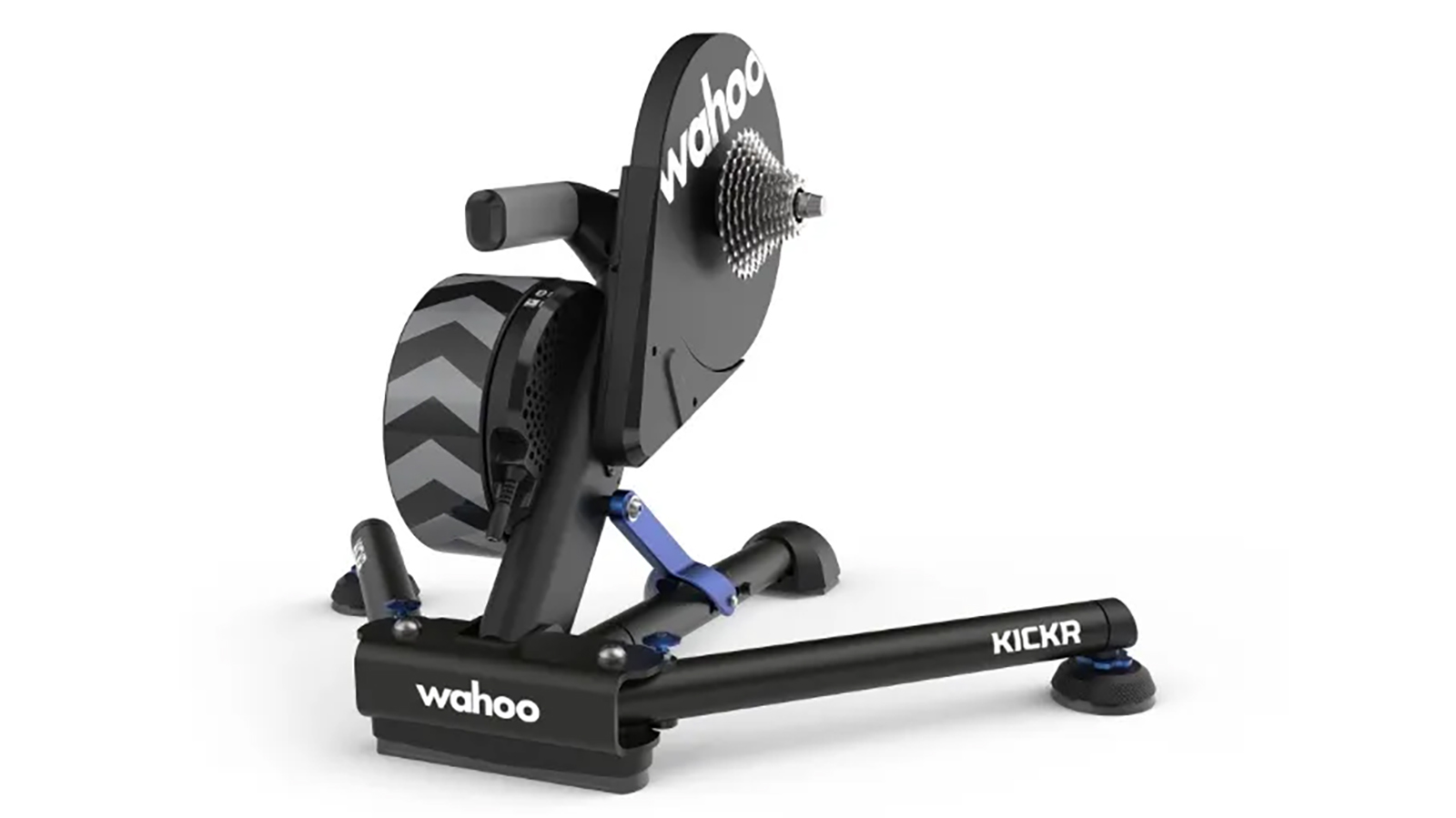
Wahoo Kickr V6
Specifications
Reasons to buy
Reasons to avoid
Wahoo’s Kickr has been considered one of the best direct-drive smart trainers available pretty much since it was launched.
The latest model, the Kickr V6, introduces Wi-Fi connectivity, an ERG Easy Ramp feature to help ease you back into action after an interval, and an odometer to track your total mileage. The Kickr employs a 16lb flywheel, pedaling feels natural and the 2,200W max resistance and 20 percent simulated grade will surely stand up to even the most vicious sprint intervals. Using a foldable, three-leg base that is height-adjustable, there is no need for a riser block. However, it’s compatible with the Kickr Climb if you want a fully immersive experience and also works with the Headwind Bluetooth fan.
The Kickr is quick to change and stabilize the resistance, whether that be responding to attacks on Zwift or short sharp intervals in The Sufferfest. With adaptors for all modern axle standards except for Super Boost, the Kickr is just about universally compatible, not only with bikes but with training apps and cycling head units too – as well as the new Wi-Fi connection, it features ANT+, ANT+ FEC and Bluetooth compatibility.
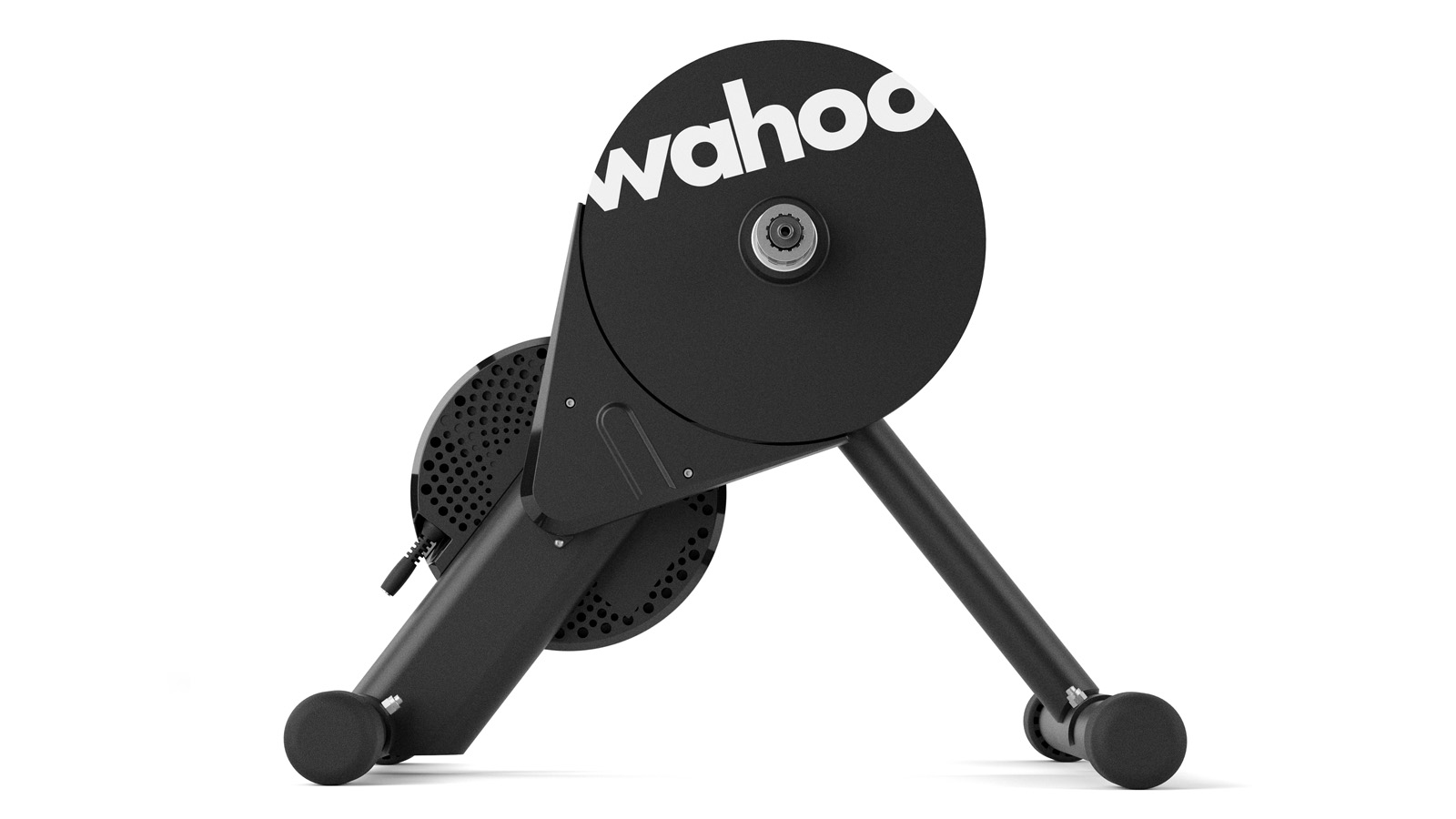
Wahoo Kickr Core
Specifications
Reasons to buy
Reasons to avoid
The Kickr Core is a slightly toned-down version of the brand's flagship smart trainer. It lacks a bit of top-end performance and foldable legs, but it's still as reliable and quiet as ever. The flywheel drops from 16lbs to 12lbs, the max resistance is 1,800W and the simulated grade is only 16 percent. While on paper these numbers might not be comparatively impressive, there is more than enough resistance available to extend well beyond most people’s needs.
The fixed legs and lack of a handle mean it’s not an easy thing to move around, but it’s plenty stable. Although it doesn’t come out of the box with a cassette, that’s not really an issue if you’re planning to use a mountain bike because you’ll need a wide range cassette anyway. It comes with the same axle adaptors as the Kickr and works with the entire Wahoo ecosystem.
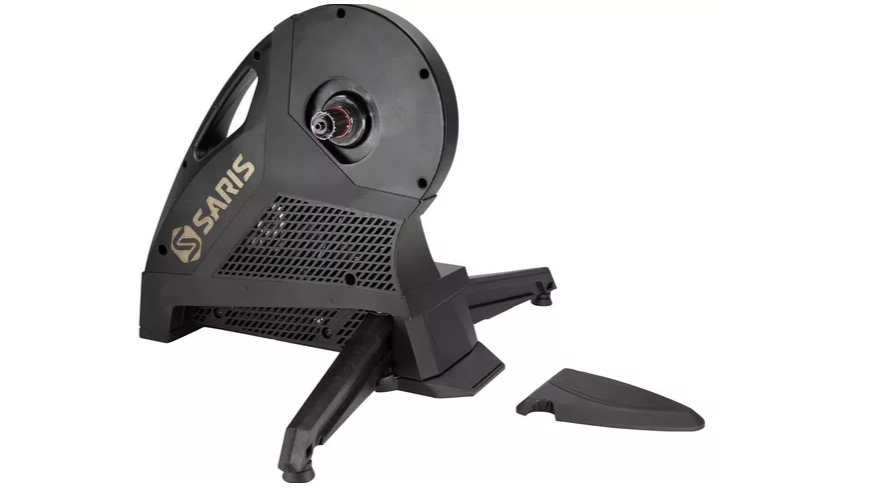
Saris H3
Specifications
Reasons to buy
Reasons to avoid
The Saris H3 smart trainer definitely undercuts a lot of the competition on price yet with the heavy flywheel assures a realistic ride feel and the max incline and max wattage easily match more expensive trainers. The 2 percent power accuracy is good as well and offers enough accuracy to efficiently train or explore virtual worlds, and the integrated speed and cadence meter gives smooth transitions between resistance levels.
The unit's design is well thought out, including foldable legs and a carry handle to make moving and storage much easier. It's also pretty quiet so you can train in the mornings or evenings without the fear of disturbing the neighbors.
How to choose the best MTB smart trainer
Why should you train indoors?
Mountain biking is so much more enjoyable when you’re fit, and if you have more matches to burn getting up that techy climb, you will have that much more to give on the descent. The best way to get fitter is by doing structured interval sessions that are designed to push specific systems of your physiology; the trouble is that doing intervals and hitting specific power targets on singletrack is not really all that feasible. It can be downright dangerous not only for yourself, but also for those around you – plus, it’s a fantastic way to ruin an entertaining bit of trail.
Riding indoors removes all the variables and allows you to complete structured workouts more efficiently; if a workout calls for you to do 320W for ten minutes, there are no hills, rollers, rock gardens, or downed trees in the way and the only thing stopping you from hitting your targets is your legs.
What are the different types of trainers?
There are three types of indoor trainers: direct-drive smart trainers, wheel-on smart trainers, and wheel-on dumb trainers.
Direct-drive smart trainers have their own cassette and see your bike attached to the unit itself without the rear wheel. Inside they will have a resistance unit and a power meter that’s controlled by an app, so if your workout calls for 200 watts, it will make you pedal 200 watts. Most smart trainers are ANT+, ANT+ FEC and Bluetooth enabled and speak the same language as apps like Zwift, TrainerRoad, and The Sufferfest to provide interactive resistance.
Wheel-on smart trainers grab your bike by the rear axle and press a roller drum against the tire to create resistance. Similar to their direct-drive cousins, these trainers have electronics built-in, with the same connectivity designed to work with apps and create an interactive ride. Because your drivetrain isn’t directly connected to the trainer, the power readings aren’t quite as accurate; also the tire needs to warm up and you’ll need to complete a spin-down calibration.
Speaking of tires you’re also going to want a trainer tire like the Tacx Trainer Tire or Vittoria Zaffiro Pro Home Trainer Tire which use a hard compound to prolong life and limit noise. They can be pretty hard to find, especially in MTB sizes, so a cheap slick will suffice. We’d also recommend buying the most inexpensive wheel you can find, that way you’re not trying to swap tires around before you hop on the trainer. If your bike uses a thru-axle, you’ll also need a trainer-specific one like the Tacx E-Thru-Axle, Kinetic Traxel, or a Robert Axle Project Trainer thru-axle.
Then, you have wheel-on dumb trainers, which use the same wheel drum-style resistance unit but don’t have any electronics. You can still get a solid workout with one of these, but you will have to find the right gearing and cadence to hit your targets. Because there are no electronics, these trainers are also quite inexpensive in comparison to their smart peers.
Can I use a smart trainer with a mountain bike?
Generally yes, if a trainer is compatible with the axle width of your mountain bike then you shouldn't have any problems. However, depending on what trainer you opt for, you may need a few additional bits and pieces to get the most out of your indoor session.
If you are opting for a direct drive you will need to make sure that it's compatible with your chosen freehub standard, but more on that below. Depending on your trainer, you may also need a riser block to level out the axles. If not, your rear axle will be higher with your bike in the trainer, pitching your weight forward and putting extra stress on your hands, and possibly causing soft tissue pressure on your saddle. Lots of riser blocks are road specific; however, some like the Elite Sterzo or Kinetic Ring Riser work with both MTB and road tires – the former even allows you to take advantage of the new steering functionally in Zwift. For every setup, you will want a BIG fan to prevent yourself from overheating.
Direct-drive smart trainer – you will need:
- A bike
- The correct adaptors for your rear hub spacing – most include these in the box
- A cassette and/or freehub body
Wheel-on smart trainer – you will need:
- A bike
- A trainer thru-axle
- A trainer tire or slick
Wheel-on dumb trainer – you will need
- A bike
- A power meter or speed and cadence sensor for Virtual Power
- A trainer-specific thru-axle
- A trainer tire or a slick
What cassette do I need?
Some smart trainers come with a cassette, but it will be a narrow block 11-speed road cluster and standard HG freehub. Because of the 10T small cog on both Sram and Shimano cassettes, your bike also more than likely has a SRAM XD Driver or Shimano Microspline freehub, meaning your gears may be incompatible without an extra purchase.
Most trainer manufacturers also make XD and Microspline drivers for their direct drive turbos, so you can run the same cassette you would outdoors. Before committing to a smart trainer purchase we would recommend you check that the required freehub is available.
What is Virtual Power?
When training apps were in their infancy, our friends over at TrainerRoad made power training accessible for the masses with Virtual Power. Every trainer has a resistance curve, meaning it takes a certain amount of watts to spin the drum at a particular speed. This is a measurable and repeatable metric, and all you need to use this feature is a speed and cadence sensor.
It’s not a perfect measure because of variables like tire pressure, how snug the drum is on your tire, and if the tire is warm this can affect the reading slightly. Still, for those looking to get into power training, Virtual Power provides a low barrier to entry and gets you within the wattage ballpark.
Should you lock out your suspension?
Indoor training is all about efficiency, and watts lost to suspension bob means you’ll have to push harder to hit your targets, but there are two schools of thought as to whether or not you should lock out your suspension.
If we are talking about just nailing your intervals, locking out your suspension or firming up the compression will make sure that your bike isn’t wallowing up and down while you suffer through sprint intervals.
Having said that, while you’re out on the trail, your suspension will be active, and one could argue leaving it unlocked on the trainer will provide a more realistic riding and training experience.

Born and bred in Colorado, and now based in Australia, Colin comes from a ski racing background and started riding as a way to stay fit through the summer months. His father, a former European pro, convinced him to join the Colorado State University collegiate cycling team, and he hasn't stopped since. It's not often he pins on a number nowadays, and you'll likely find him in search of flowy singletrack, gravel roads and hairpin corners. Colin has worked at Bikeradar and is a regular contributor to Australian Mountain Bike and Cyclist magazines.
Rides: BMC Team Machine SLR01, Trek Top Fuel 9, Ibis Ripley
